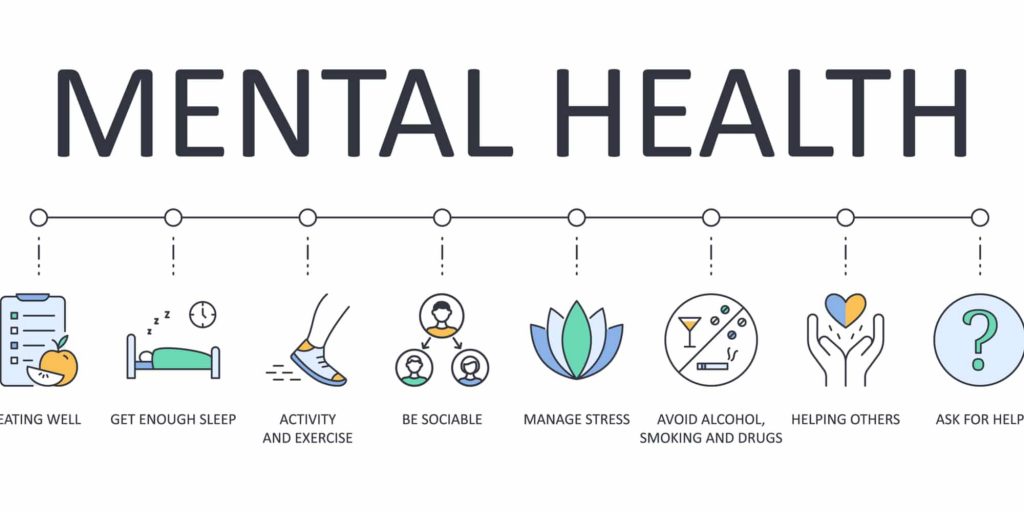Contents
- 1 SEO Headline Tips
- 1.1 Keyword-Rich: Incorporate Relevant Keywords Naturally
- 1.2 Clarity & Conciseness: Keep It Clear, Concise, and Easy to Understand
- 1.3 Emotional Appeal: Evoke Emotions to Capture Attention
- 1.4 Numbers & Lists: Use Numbers and Lists for Scannability
- 1.5 Uniqueness & Originality: Stand Out with Unique and Original Titles
- 1.6 Length Optimization: Adhere to Recommended Character Limits
- 1.7 FAQ
- 1.8 Tips
- 1.9 Conclusion
Images References :
In the realm of search engine optimization (SEO), headlines play a pivotal role in determining a web page’s visibility and ranking in search engine results pages (SERPs). A well-crafted headline not only captures the attention of users but also signals to search engines the relevance and value of your content.
By incorporating SEO best practices into your headline writing strategy, you can significantly enhance your chances of attracting organic traffic and improving your overall SEO performance. In this comprehensive guide, we will delve into the essential elements of effective SEO headlines, providing actionable tips and techniques to help you craft compelling titles that resonate with both users and search engines.
Before we dive into the specifics of crafting SEO-optimized headlines, let’s first understand the significance of headlines in the context of SEO.
SEO Headline Tips
To craft compelling and effective SEO headlines, consider the following six key points:
- Keyword-Rich: Incorporate relevant keywords naturally.
- Clarity & Conciseness: Keep it clear, concise, and easy to understand.
- Emotional Appeal: Evoke emotions to capture attention.
- Numbers & Lists: Use numbers and lists for scannability.
- Uniqueness & Originality: Stand out with unique and original titles.
- Length Optimization: Adhere to recommended character limits.
By adhering to these principles, you can craft SEO headlines that not only appeal to users but also align with search engine algorithms, ultimately boosting your organic visibility and driving more qualified traffic to your website.
Keyword-Rich: Incorporate Relevant Keywords Naturally
Incorporating relevant keywords into your SEO headlines is a crucial aspect of optimizing your content for search engines. When users type queries into search engines, they use specific keywords or phrases to find the information they need. By including these keywords in your headlines, you increase the chances of your content appearing in relevant search results.
However, it’s important to strike a balance between keyword optimization and natural language. Keyword stuffing, or the excessive use of keywords in an unnatural manner, can negatively impact your SEO performance and user experience. Instead, focus on incorporating keywords seamlessly into your headlines, ensuring they flow naturally and provide a clear and concise summary of your content.
Consider the following tips for incorporating keywords naturally into your SEO headlines:
- Keyword Research: Conduct thorough keyword research to identify relevant and high-performing keywords related to your topic.
- Strategic Placement: Place your primary keyword near the beginning of your headline, as this carries more weight for search engines.
- Natural Integration: Integrate keywords into your headline in a way that sounds natural and conversational, avoiding forced or awkward phrasing.
- Keyword Variations: Use variations of your primary keyword, including synonyms and related terms, to avoid repetition and improve keyword coverage.
By following these guidelines, you can create keyword-rich SEO headlines that effectively target relevant search queries without compromising readability or user engagement.
Remember, the primary goal of SEO headline optimization is to attract users and encourage them to click on your content. While incorporating relevant keywords is essential, it should always be done in a way that enhances the overall quality and relevance of your headlines.
Clarity & Conciseness: Keep It Clear, Concise, and Easy to Understand
Clarity and conciseness are paramount in crafting effective SEO headlines. Your headlines should be easy to read, understand, and quickly convey the main idea of your content. Avoid using jargon, technical terms, or overly complex language that may alienate or confuse your audience.
- Short and Sweet: Aim for headlines that are concise and to the point. Ideally, keep your headlines within 60 characters, including spaces, to ensure they display fully in search results.
- Use Strong Verbs: Employ active and powerful verbs that convey a sense of urgency or action. Strong verbs capture attention and entice users to click on your content.
- Avoid Ambiguity: Strive for clarity and avoid ambiguity in your headlines. Ensure that your headlines accurately reflect the content of your page and avoid misleading or clickbait-style titles.
- Easy to Skim: Write headlines that are easy to skim and quickly grasp. Use simple sentence structure and avoid long, convoluted phrases that may require multiple reads to understand.
By adhering to these principles of clarity and conciseness, you can create SEO headlines that are not only informative and engaging but also accessible to a wide range of audiences. Clear and concise headlines improve the user experience, increase click-through rates, and ultimately boost your SEO performance.
Emotional Appeal: Evoke Emotions to Capture Attention
Human beings are emotional creatures, and our decisions are often influenced by our emotions. This principle also applies to our online behavior, including our search engine activity. By tapping into emotions, you can create SEO headlines that are more compelling and likely to capture user attention.
- Curiosity: Spark curiosity and intrigue with your headlines. Pose questions or present surprising facts that pique the reader’s interest and encourage them to click to learn more.
- Urgency: Create a sense of urgency or scarcity to motivate users to take immediate action. Use words like “limited time,” “exclusive,” or “don’t miss out” to instill a sense of urgency.
- Fear of Missing Out (FOMO): Leverage the fear of missing out by highlighting the benefits or value that users may lose if they don’t click on your content.
- Positive Emotions: Evoke positive emotions, such as joy, happiness, or excitement, to create a connection with your audience and make them more receptive to your message.
When crafting emotionally appealing SEO headlines, it’s important to avoid sensationalism or misleading claims. Focus on creating headlines that genuinely reflect the value of your content and resonate with your target audience. By tapping into human emotions, you can create headlines that stand out, drive clicks, and ultimately improve your SEO performance.
Numbers & Lists: Use Numbers and Lists for Scannability
In today’s fast-paced digital world, users often skim and scan content rather than reading it word by word. To make your SEO headlines more scannable and attention-grabbing, consider incorporating numbers and lists.
Numbers:
- Specific and Quantifiable: Numbers provide specific and quantifiable information that is easy to understand and remember. They add credibility and authority to your headlines.
- Visual Appeal: Numbers break up the monotony of text and create visual appeal, making your headlines more noticeable and engaging.
- Comparison and Contrast: Use numbers to compare and contrast different aspects of your content, highlighting key benefits or unique features.
Lists:
- Structured and Organized: Lists present information in a structured and organized manner, making it easier for users to grasp the main points quickly.
- Easy to Skim: Lists are easy to skim, allowing users to quickly identify the information they are most interested in.
- Improved Readability: Lists improve the readability of your headlines, making them more accessible to a wider audience.
When using numbers and lists in your SEO headlines, keep the following tips in mind:
- Accuracy: Ensure that the numbers and data you present are accurate and up-to-date.
- Relevance: Use numbers and lists that are relevant to the content of your page and the interests of your target audience.
- Conciseness: Keep your lists concise and focused, avoiding unnecessary details or repetitions.
By incorporating numbers and lists into your SEO headlines, you can make them more scannable, engaging, and informative, ultimately improving user experience and boosting your SEO performance.
Remember, effective SEO headlines are a combination of art and science. By following these guidelines and continually testing and refining your headlines, you can create compelling titles that resonate with your audience and drive organic traffic to your website.
Uniqueness & Originality: Stand Out with Unique and Original Titles
In the sea of content on the internet, it’s essential to make your SEO headlines stand out from the crowd. Uniqueness and originality are key factors that can help your headlines capture attention and encourage users to click on your content.
Why Uniqueness and Originality Matter:
- Differentiation: Unique and original headlines differentiate your content from competitors, making it more likely to be noticed and remembered.
- Curiosity and Intrigue: Original headlines spark curiosity and intrigue, compelling users to learn more about your content.
- Brand Building: Unique headlines help establish your brand’s identity and position you as a thought leader in your industry.
Tips for Creating Unique and Original Headlines:
- Brainstorm and Research: Spend time brainstorming and researching different headline ideas. Look for unique angles, insights, or data points that can set your headlines apart.
- Avoid Clichés and Buzzwords: Steer clear of overused clichés and buzzwords that have lost their impact and originality.
- Personalize and Humanize: Incorporate personal anecdotes, stories, or human elements to make your headlines more relatable and engaging.
- Use Wordplay and Humor: If appropriate for your brand and audience, use wordplay, puns, or humor to create clever and memorable headlines.
- Test and Refine: Continuously test different headline variations and analyze their performance. Refine your headlines based on data and user feedback.
Examples of Unique and Original Headlines:
- “The Secret Ingredient That Will Make Your [Dish] Irresistible”
- “[Number] Surprising Ways to Use [Product] You Never Imagined”
- “æ秘: The Hidden Truth About [Industry] That No One Is Talking About”
- “[Question] That Will Change the Way You Think About [Topic]”
- “The Ultimate Guide to [Topic] That Will Make You an Expert”
By investing time and effort into creating unique and original SEO headlines, you can capture attention, drive organic traffic to your website, and establish a strong brand identity.
Remember, SEO headline optimization is an ongoing process. Continuously monitor your headlines’ performance, test new variations, and adapt to the evolving preferences of your audience. By staying creative and innovative, you can craft headlines that resonate with your target audience and achieve your SEO goals.
Length Optimization: Adhere to Recommended Character Limits
Search engines have specific character limits for SEO headlines, and adhering to these limits is crucial for optimizing your titles for search visibility. Exceeding these limits can result in your headlines being cut off in search results, negatively impacting click-through rates and overall SEO performance.
- Title Tag Character Limit: The recommended character limit for SEO title tags is approximately 60 characters, including spaces. This ensures that your headlines display fully in search results and avoid truncation.
- Snippet Length: While there is no strict character limit for meta descriptions, the recommended length is around 155-160 characters, including spaces. This length allows you to provide a concise summary of your content and entice users to click on your result.
- Keep it Concise: Strive to convey your message in as few characters as possible without sacrificing clarity or keyword relevance. Every character counts, so use concise and impactful language.
- Use Dynamic Titles: Implement dynamic titles that can adjust their length based on the context and content of each page. This allows you to optimize headlines for specific keywords and queries.
By adhering to recommended character limits and optimizing your headlines for length, you can ensure that your content is presented effectively in search results, increasing its visibility and driving more organic traffic to your website.
FAQ
To further clarify the concept of SEO headline tips and provide additional insights, here’s a comprehensive FAQ section:
Question 1: Why are SEO headlines important?
Answer: SEO headlines play a pivotal role in determining a web page’s visibility and ranking in search engine results pages (SERPs). They are the first impression users have of your content, and compelling headlines can entice them to click on your result, increasing organic traffic and improving SEO performance.
Question 2: What are some key elements of an effective SEO headline?
Answer: Effective SEO headlines typically incorporate relevant keywords, are clear and concise, evoke emotional appeal, utilize numbers and lists for scannability, stand out with uniqueness and originality, and adhere to recommended character limits.
Question 3: How do I incorporate relevant keywords into my SEO headlines naturally?
Answer: To incorporate keywords naturally, conduct thorough keyword research to identify relevant terms, place your primary keyword near the beginning of your headline, integrate keywords seamlessly into your headline, and use variations of your primary keyword to avoid repetition.
Question 4: How can I make my SEO headlines clear and concise?
Answer: Aim for headlines that are short and sweet, employ strong verbs, avoid ambiguity and jargon, and ensure your headlines are easy to skim and understand quickly.
Question 5: How do I evoke emotional appeal in my SEO headlines?
Answer: Tap into emotions by sparking curiosity, creating a sense of urgency or fear of missing out (FOMO), highlighting positive emotions, and avoiding sensationalism or misleading claims.
Question 6: Why is it important to optimize my SEO headlines for length?
Answer: Search engines have specific character limits for SEO headlines, and adhering to these limits ensures that your headlines display fully in search results, avoiding truncation. This improves visibility, click-through rates, and overall SEO performance.
Closing Paragraph:
By understanding and implementing these SEO headline tips, you can create compelling titles that resonate with users, align with search engine algorithms, and ultimately boost your organic visibility and drive more qualified traffic to your website.
In addition to the FAQ section, here are a few bonus tips to further enhance your SEO headline writing:
Tips
To further assist you in crafting effective SEO headlines, here are four practical tips:
Tip 1: Use a Headline Analyzer:
Leverage headline analyzer tools to assess the effectiveness of your headlines. These tools provide feedback on various aspects of your headlines, such as keyword density, length, clarity, and emotional appeal. By utilizing these tools, you can identify areas for improvement and optimize your headlines for better performance.
Tip 2: Test Different Headlines:
Don’t settle for the first headline you come up with. Experiment with different variations to see which ones resonate best with your audience. Conduct A/B testing to compare the performance of different headlines and gather data on click-through rates and engagement metrics. This data-driven approach helps you identify the headlines that deliver the best results.
Tip 3: Monitor and Adjust:
SEO is an ongoing process, and so is headline optimization. Continuously monitor the performance of your headlines using analytics tools. Track metrics such as organic traffic, click-through rates, and dwell time. Based on your findings, make adjustments to your headlines to improve their effectiveness over time.
Tip 4: Learn from Competitors:
Keep an eye on your competitors’ SEO strategies. Analyze their headlines to understand what works well for them. Identify common patterns, successful formulas, and elements that contribute to their headlines’ effectiveness. Use this knowledge to inform your own headline writing and stay competitive in search results.
Closing Paragraph:
By incorporating these tips into your SEO headline writing process, you can create compelling and optimized titles that capture users’ attention, drive organic traffic, and improve your overall SEO performance.
In conclusion, SEO headline optimization is a crucial aspect of driving organic traffic and improving your website’s search engine rankings. By adhering to best practices, incorporating relevant keywords, and crafting clear, concise, and emotionally appealing headlines, you can create titles that resonate with both users and search engines.
Conclusion
In the dynamic landscape of search engine optimization, crafting compelling and effective SEO headlines is paramount for capturing user attention, driving organic traffic, and improving overall website performance.
Throughout this comprehensive guide, we have explored the essential elements of SEO headline optimization, providing actionable tips and techniques to help you create titles that resonate with both users and search engines.
Summary of Main Points:
- Keyword-Rich: Incorporate relevant keywords naturally into your headlines to improve search visibility and relevance.
- Clarity & Conciseness: Keep your headlines clear, concise, and easy to understand, ensuring they convey your message effectively.
- Emotional Appeal: Tap into human emotions to capture attention and create a connection with your audience.
- Numbers & Lists: Use numbers and lists to enhance scannability and make your headlines more visually appealing.
- Uniqueness & Originality: Stand out from the competition with unique and original headlines that set your content apart.
- Length Optimization: Adhere to recommended character limits for title tags and meta descriptions to ensure your headlines display fully in search results.
Closing Message:
By adhering to these SEO headline optimization principles and continually refining your headlines based on data and user feedback, you can craft compelling titles that drive organic traffic, improve SEO performance, and ultimately achieve your online marketing goals.
Remember, SEO is an ongoing process, and so is headline optimization. Stay updated with the latest trends and best practices, experiment with different approaches, and continuously monitor your results to ensure your headlines remain effective in capturing the attention of your target audience and driving success in search engine rankings.




